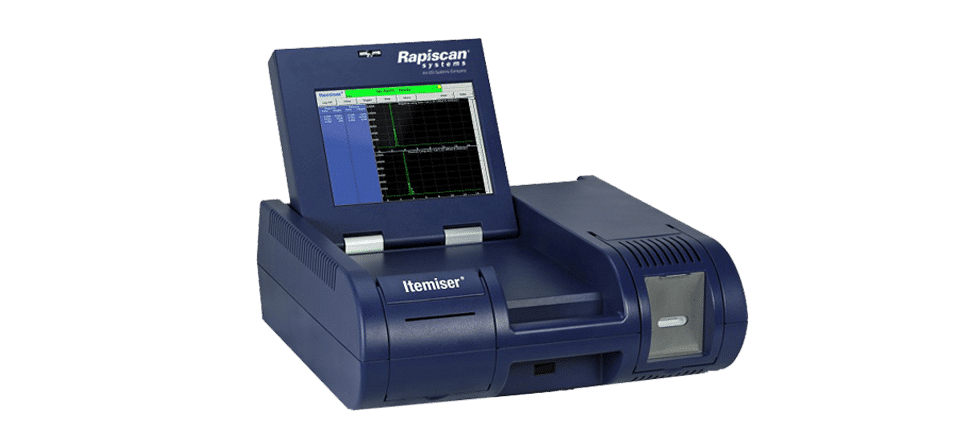In an era where security concerns are paramount, explosives trace detectors (ETDs) play a critical role in safeguarding public spaces, transportation systems, and sensitive facilities. These devices are designed to detect minute traces of explosive substances, offering a reliable and efficient means of identifying threats before they materialize.
This article delves into the science behind ETDs, explaining how they work, the technologies that power them, and their integration into broader security frameworks such as speed enforcement camera systems for enhanced situational awareness and public safety.
Understanding Explosives Trace Detection
Explosives trace detection focuses on identifying the presence of explosive compounds through residue left behind in particles or vapors. Explosives, both commercial and improvised, consist of specific chemical signatures that can be detected using highly sensitive instruments.
- Types of Explosives Detected: ETDs can identify a range of materials, including TNT, RDX, PETN, and ammonium nitrate.
- Sensitivity: These detectors are capable of identifying trace amounts as small as a few nanograms, ensuring early threat detection.
Core Technologies in ETDs
Several scientific principles and technologies are employed in the functioning of explosives trace detectors:
1. Ion Mobility Spectrometry (IMS):
IMS is one of the most commonly used techniques in ETDs. It works by ionizing a sample and analyzing the mobility of ions in an electric field.
- How it Works: Samples are collected via swabs or air intake and introduced into the detector. The molecules are ionized, and their time of flight in the electric field is measured.
- Advantages: High sensitivity and rapid detection, making IMS suitable for high-traffic areas like airports.
2. Mass Spectrometry (MS):
Mass spectrometry is used for more detailed chemical analysis, providing a higher level of accuracy.
- How it Works: This method measures the mass-to-charge ratio of ions, offering a unique chemical fingerprint of the explosive material.
- Applications: Ideal for scenarios requiring in-depth analysis, such as forensic investigations.
3. Infrared (IR) and Raman Spectroscopy:
These optical methods detect explosives by analyzing their molecular vibrations.
- IR Spectroscopy: Measures how molecules absorb infrared light, revealing their chemical composition.
- Raman Spectroscopy: Uses laser light scattering to identify molecular structures, especially in complex mixtures.
4. Chemiluminescence and Electrochemical Sensors:
These are specialized methods used in certain portable ETDs to detect nitrates and other explosive components.
How ETDs Collect and Analyze Samples
The effectiveness of ETDs lies in their ability to collect and process samples efficiently:
- Particle Sampling: Swabs or sticky pads are used to gather residue from surfaces like luggage, clothing, or vehicles.
- Vapor Sampling: Air intakes detect explosive vapors emitted from materials, providing a non-contact detection method.
- Dual-Mode Detection: Modern ETDs often combine both particle and vapor detection for comprehensive analysis.
Integration with Speed Enforcement Camera Systems
Security technologies are increasingly interconnected to create holistic safety networks. ETDs are now being integrated with systems like speed enforcement camera systems for enhanced monitoring and threat detection.
How Integration Works:
- Data Sharing: ETDs and camera systems share real-time data, enabling faster identification of suspicious activities.
- Targeted Surveillance: Cameras equipped with automatic license plate recognition (ALPR) can flag vehicles for explosives checks based on ETD data.
- Enhanced Response: When a speed enforcement camera identifies erratic driving patterns, ETDs can screen the vehicle for potential threats.
Benefits of Integration:
- Improved Efficiency: Reduces manual intervention and speeds up threat identification.
- Comprehensive Coverage: Combines road safety with security against explosives-related threats.
Applications of Explosives Trace Detectors
ETDs are used in a variety of settings to ensure safety and security:
- Transportation Hubs: Airports, train stations, and ports rely on ETDs to screen passengers and cargo for explosive threats.
- Public Events: High-profile gatherings and concerts use portable ETDs to secure venues.
- Military and Law Enforcement: ETDs aid in bomb disposal operations and forensic investigations.
- Industrial Use: Facilities handling chemicals or explosives use ETDs to monitor compliance and safety.
Challenges in Explosives Trace Detection
While ETDs are highly effective, they face certain challenges:
- False Positives: Certain non-explosive substances, like fertilizers or cleaning agents, can trigger alarms.
- Environmental Factors: High humidity or temperature extremes may affect detection accuracy.
- Cost and Maintenance: Advanced ETDs require significant investment and regular upkeep.
Advancements in ETD Technology
To overcome challenges and improve effectiveness, ETD technology is evolving rapidly:
- AI and Machine Learning: Algorithms are being developed to analyze data more accurately, reducing false positives.
- Miniaturization: Portable and wearable ETDs are becoming more common, providing flexibility in field operations.
- Multi-Sensor Systems: Combining multiple detection methods enhances reliability and scope.
- Integration with IoT: Internet-connected ETDs enable remote monitoring and centralized data analysis.
The Role of Training and Standardization
The effectiveness of ETDs also depends on proper training for operators and adherence to standardized protocols:
- Operator Training: Personnel must understand device functionality and recognize potential false positives.
- Standardization: Regulatory bodies like the TSA and ICAO set guidelines for ETD deployment and maintenance.
The Future of Explosives Trace Detectors
The future of ETDs is bright, with potential advancements shaping the landscape of security:
- Enhanced AI Integration: AI-driven ETDs will provide faster, more accurate analysis.
- Sustainability Focus: Eco-friendly materials and energy-efficient designs will dominate.
- Wider Integration: Systems like speed enforcement camera systems will continue to merge with ETDs, creating seamless safety ecosystems.
Conclusion
Explosives trace detectors are indispensable in modern security frameworks, offering a scientific and reliable means to identify threats. By leveraging advanced technologies like ion mobility spectrometry, AI, and integration with speed enforcement camera systems, ETDs enhance safety across diverse environments. While challenges remain, ongoing innovations and training initiatives ensure that these devices will continue to evolve, providing robust solutions for threat detection and public safety.
Also read: Role of Inflight Catering



